This post covers the second half of my stay in Panama and my trip through the Panama Canal. For my previous adventures with the End of All Roads crew – click here.
Casco Viejo
After the guys left I moved into a fairly cheap hotel in Casco Viejo (old town). I didn’t happen to notice until after I booked that the description on booking.com contained a warning: “There is a club in this hotel that goes until 3am” or something to that effect. Yep it sure did. But I’ve gotten fairly used to sleeping with noise. I’ll take noise over sleeping with heat any day. Also I’ve learned a trick to turn on noisy bathroom fans – which worked pretty well in this case – except that the bathroom fan also came with a light, but it was still preferable and I have eye shades for sleeping.


Unfortunately I left my car in the parking lot under the Marriott, so I wasn’t able to get my super loud fan out of it. But I got parking for a few days – woo hoo.
Casco Viejo is an old neighborhood in the process of being refurbished. Very picturesque – lots of bars and restaurants and fun stuff to do. Some sketchy parts still. I was offered drugs many times on a certain block. But I never felt unsafe.








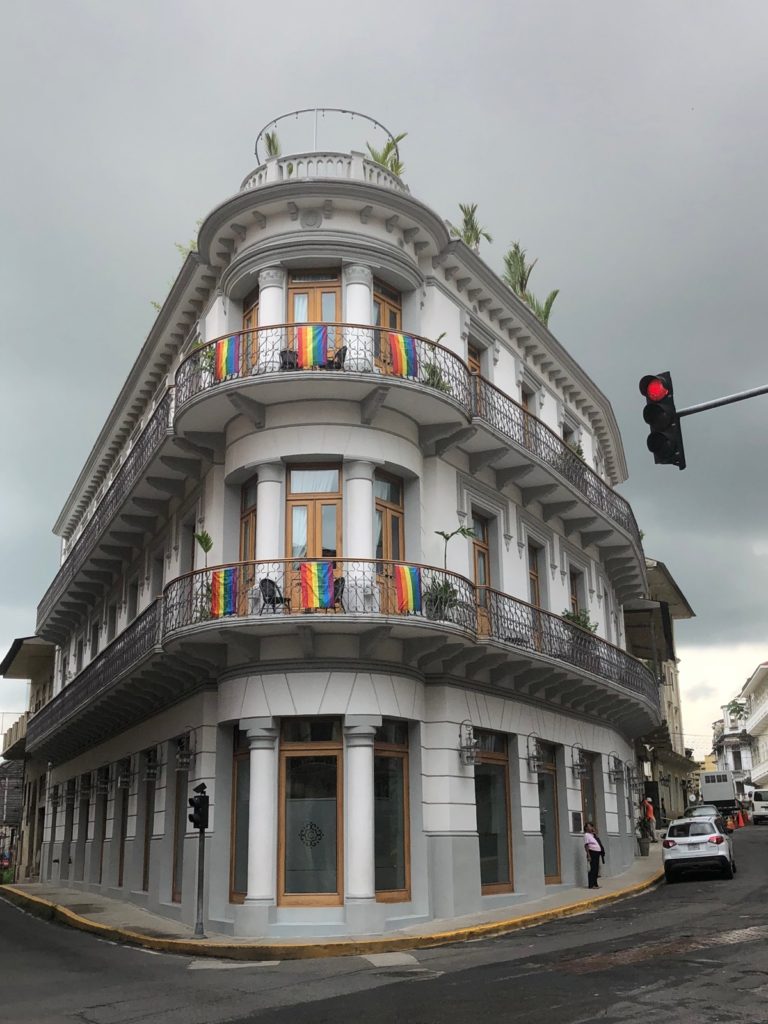
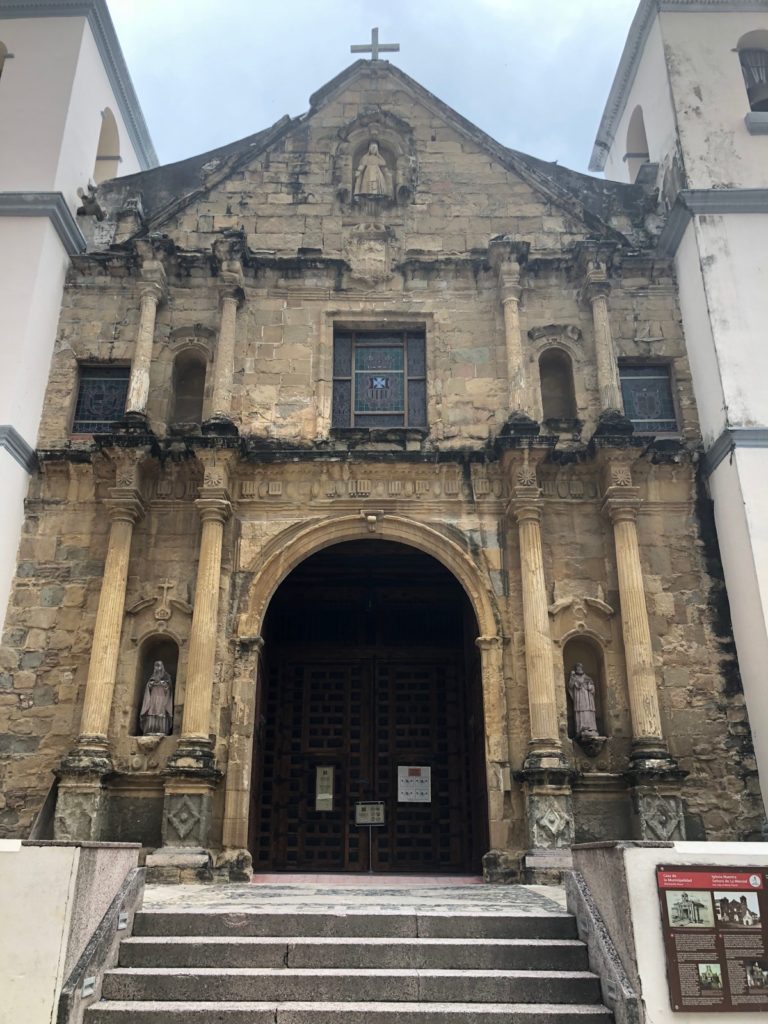







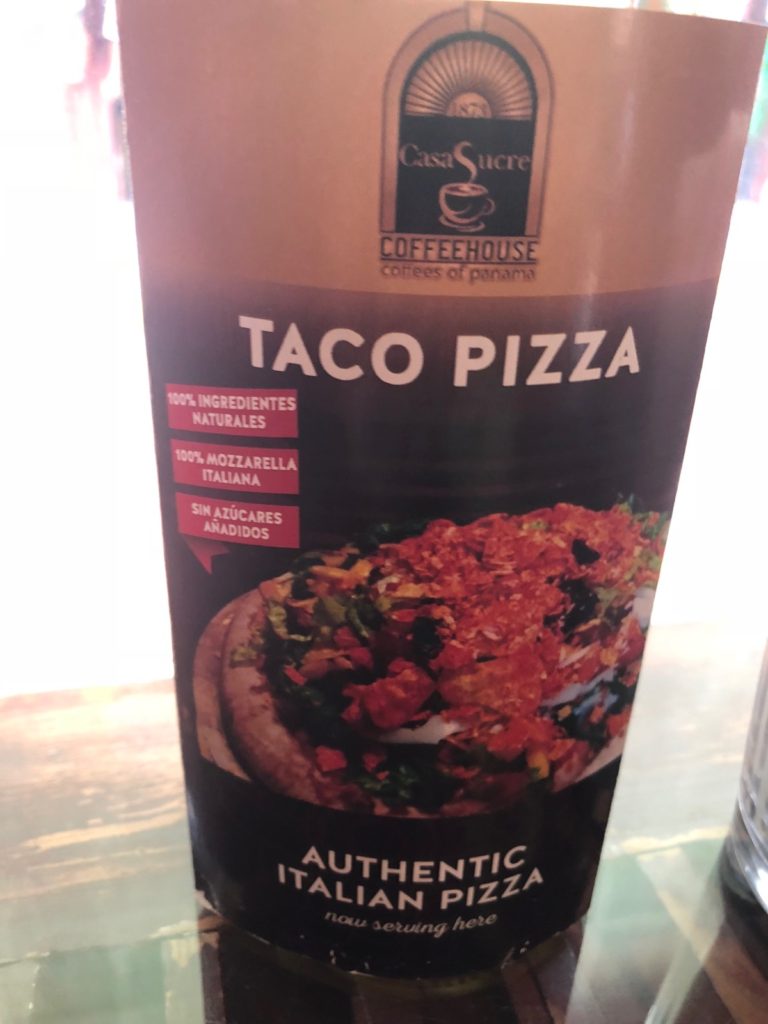
Boquete
I started looking into options to ship my car. One company – IVSS had come highly recommended by the Tucks and promised to take a lot of the leg work out of it. I reached out to them and waited for them to get back to me with schedules and a quote. A few days later I got word back that my car would ship out on June 23rd and I’d drop it off on June 21st, which was about 10 days away. So I decided to go spend a week in Boquete and study at Habla Ya Spanish School – which I highly recommend.
The drive to Boquete was a bit stressful – as it rained like this for most of the 6 hours. But one positive side effect was that all but one of the police checkpoints were unmanned.
Boquete is a lovely mountain town in the far east of Panama near the Costa Rica border, very popular with tourists and expats. It has all my requirements for long term living consideration in Latin America: cool temperatures, nice restaurants and coffee shops, and good craft beer. I found a roomy one-bedroom condo in a place called Downtown Suites for $35/night. 30% weekly discount is nice.
Only problem was I got a horrible sore throat after my first couple nights there that pretty much lasted all week. I didn’t do much except school, copy and email documents and fill out forms to ship my car, and sleep.
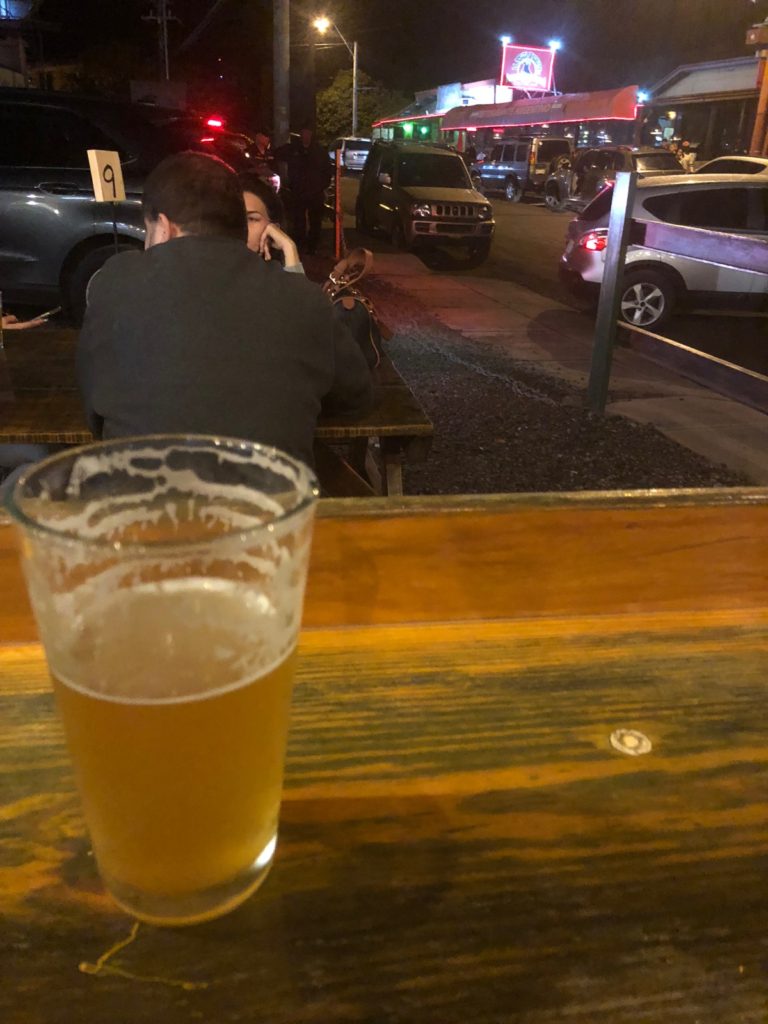



Before I got sick I took a local coffee tour which was the most interesting one I’ve done.


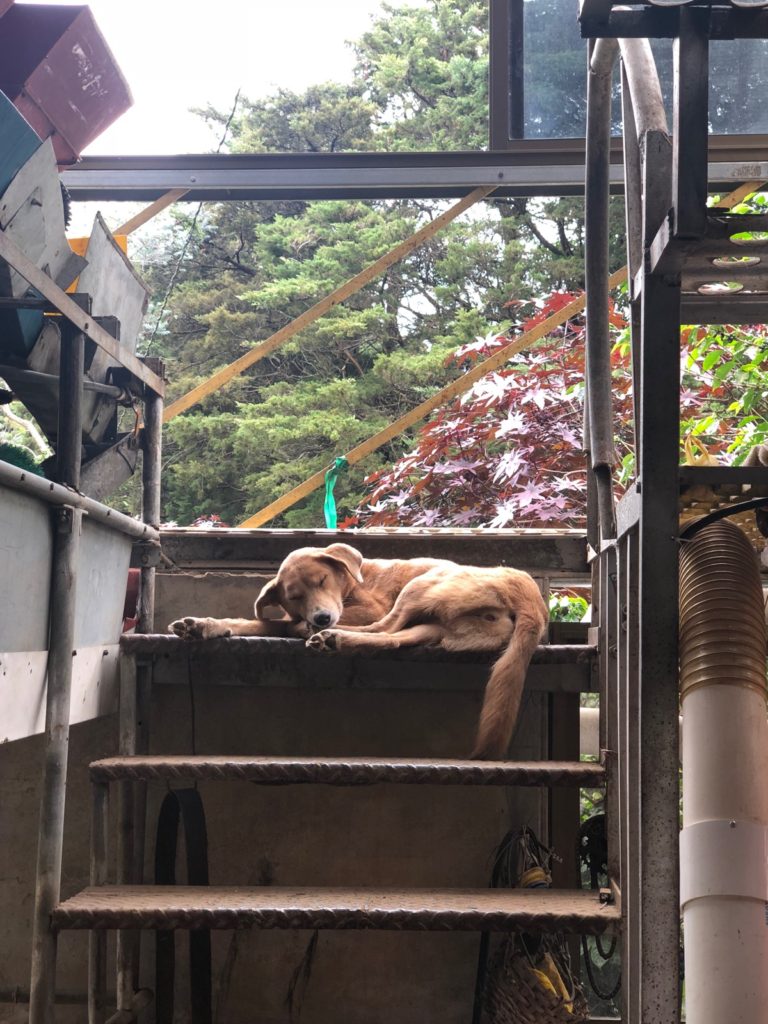

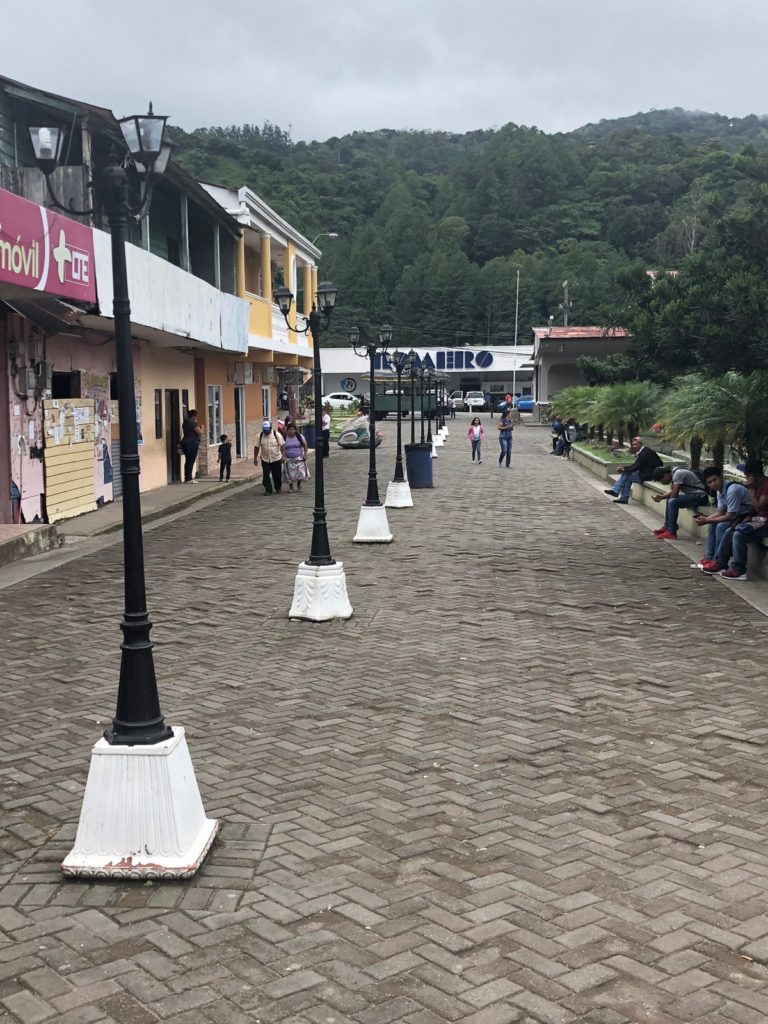






I left Boquete and headed back to Panama City to start getting my car ready to ship. However on the right south to David, I realized it’s not too late to turn right and head to Costa Rica to try out life in San Jose for a month or two. South America is definitely out for now – but trying out Costa Rica is still a possibility. I hadn’t put down any money on shipping the car. I could just tell IVSS I was delaying a bit. I pulled over at a KFC in David and meditate on it a bit.

I decided to head back to the states. I want to get my foot resolved, my renter is moving out, and I miss my work. I will be back.
Back in Panama City





I spent one more night at the Marriott then headed to Colon, the city on the Atlantic side of the Panama Canal, the next day. However I didn’t realize the car inspection I needed to do was actually in Panama City – DOH! But I had already booked the place, so I decided I would just get up early in the morning. The inspections don’t start until 8am. But they start giving out line numbers at 6am. So I had to get up pretty early from Colon – which is about an hour away.
This is another stress point where I had read about stuff like people not having their VIN # in the right place on the form and being sent back to the border – 6 hours away. I had a VIN # but no engine # marked down. Also unbeknownst to me – they only do so many inspections a day – first come first served. I would have been stressing even more if I knew that.
I made it to the inspection lot about 8:30 and got line number 13. Oh yeah – this was no normal inspection day. Panama’s national soccer team played their first ever World Cup game at 10am. So we assumed they’d be motivated to get us out of there ASAP.




The inspection went fine – one stress point down. I had a few hours to kill before I could pick up my paperwork at a separate office. So – why not go watch Panama in their first ever World Cup game – with a bunch of Panamanians? I headed back to Casco Viejo.
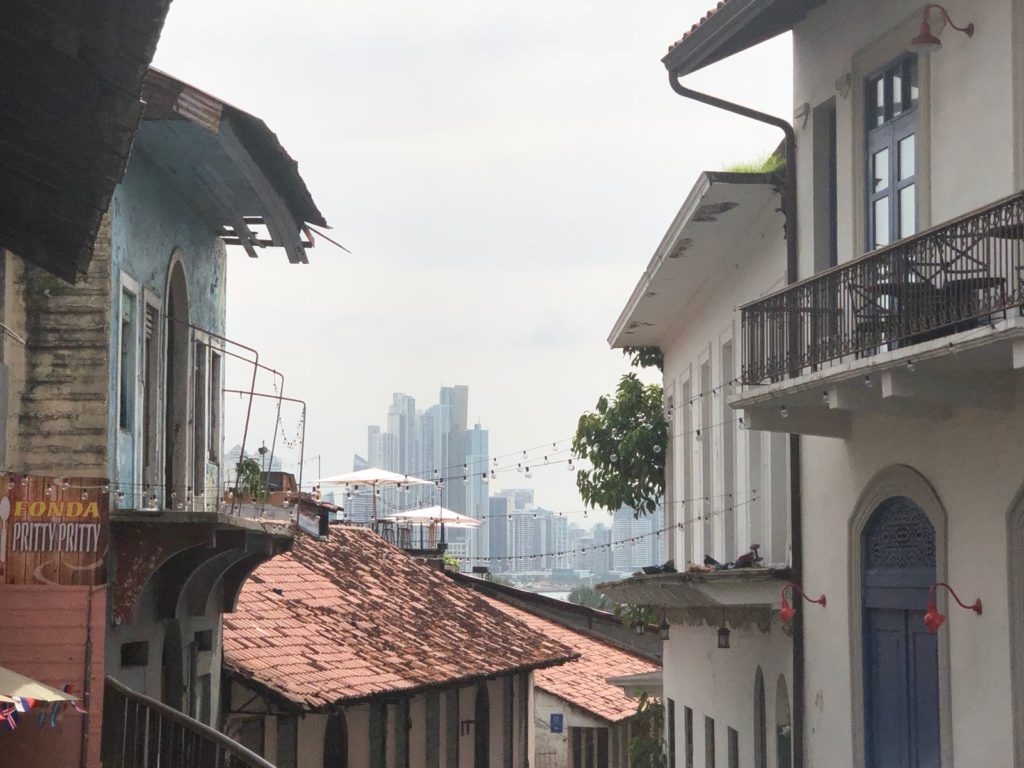
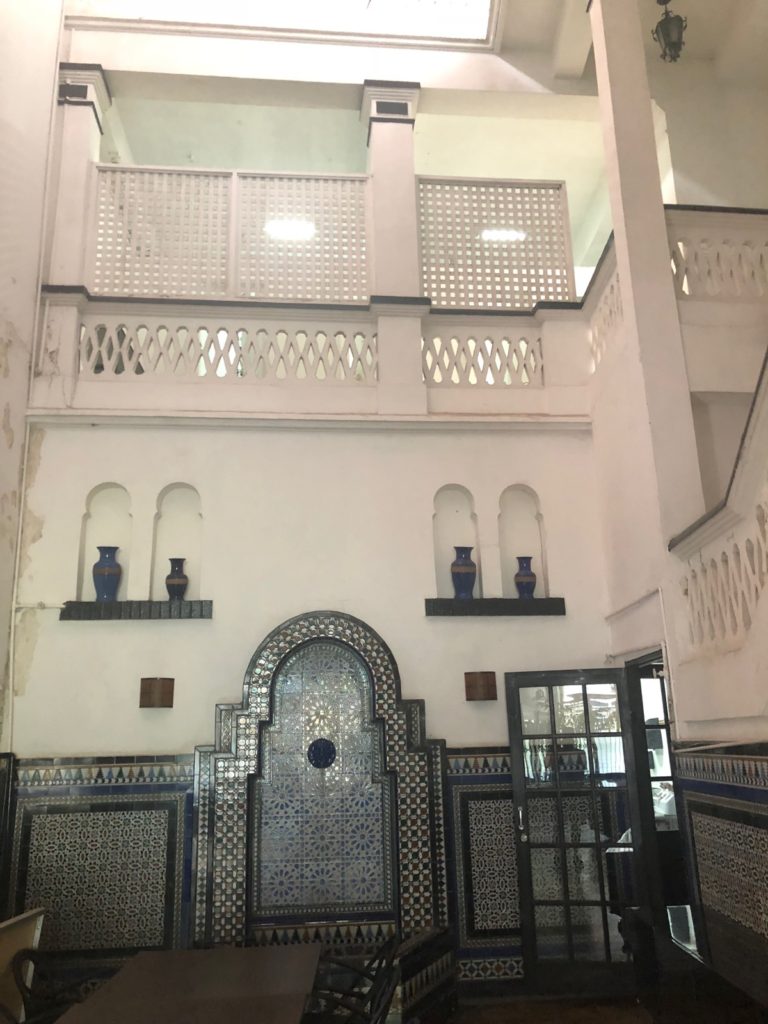
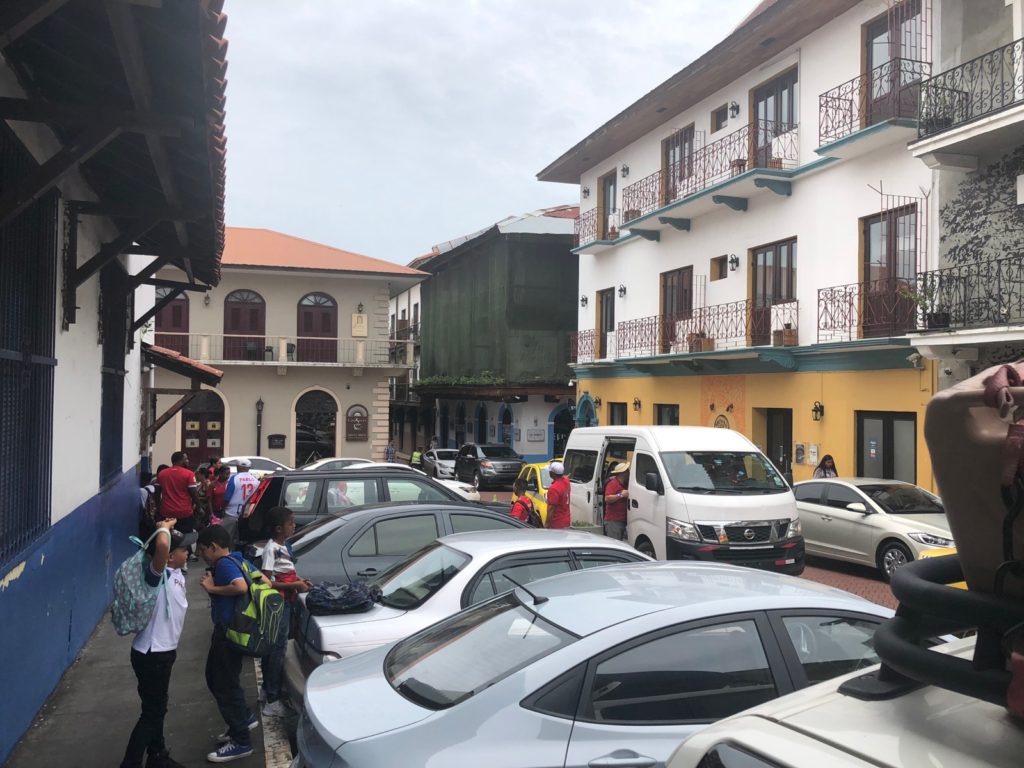
I was still walking around trying to decide which bar to watch the game at when the Panamian national anthem came on. I knew this because I could hear it bellowing out of every open door and window – usually with the occupants enthusiastically singing along. It was a pretty cool moment.







Colon
After the game and picking up my papers I headed back to Colon. I stayed 2 nights at a resort outside of town called Meliá Panamá Canal, then moved to the Radisson downtown – as I figured it would be closer to the docks where I need to drop off my car. The Melia was fine, but the food was very expensive for what you got. The $35 dinner buffet was fine – but like most buffet food there was nothing mind-blowing and you never feel like you got your money’s worth. Pass. I got a club sandwich instead.

The grounds were very nice:




I went to the visitor center at the expansion locks on the Colon side. These opened in 2016 and can accommodate much wider ships. It was pretty cool to see the giant supermax container ships up close.




The next day I was supposed to drop my car off at the port in Colon. I headed down to the Radisson to drop off a suitcase. I figured I’d rather not drag it all over the port. Originally I had planned to keep my backpack, my regular suitcase and a big bag which holds my backpack and a bunch of stuff inside. Hoo boy am I glad I cut that down to one backpack and one suitcase. I had to drag that thing on a small boat, walk a ton, drag it to Antigua, then Houston. It would have been a nightmare with another giant bag. Yay for good decisions.
The reason for all the bags is that with roll on/roll off shipping, you have to give them your keys and your car is open the whole time. People have had stuff stolen. But apparently the shipping lines are trying to crack down, and apparently one of the worst ports is Florida – which I was thankfully avoiding. This is why I got my strong locking back trunk. I also have the locking car carrier – which you could break into with your hand. So I didn’t want too put anything too valuable up there.
After a lot of re-jiggering and rethinking I figured out I could stuff my empty backpack and everything really valuable in the locking drawer – and everything else in the top carrier. I literally didn’t have room left for as much as a yoga mat – which I left out – along with my cooler. If someone wants to steal those, go ahead. I feel like the venn diagram of boat/dock workers who steal and yoga aficionados is probably two non-touching circles.
The drive to the Radisson is not the prittiest side of Colon. A lot of potential here – as a real estate agent might say.



After dropping off my luggage – I headed to the port. I paid $75 for local help (local legend in the overlander community – Boris) and was very happy I did. While I got my paperwork from the shipper, Wallenius Wilhelmsen, Boris dealt with customs – then guided me to the inspection and drop-off point.

The customs inspector showed up with a very hyper-active drug sniffing dog who had clearly been cooped up in the truck for too long. I had to pull everything out and then re-do my tetris-like packing job. There was some shoving and forcing but I finally got it all back in. Boris said they don’t always do that. I have a feeling it’s because the inspector was trying to train his dog.




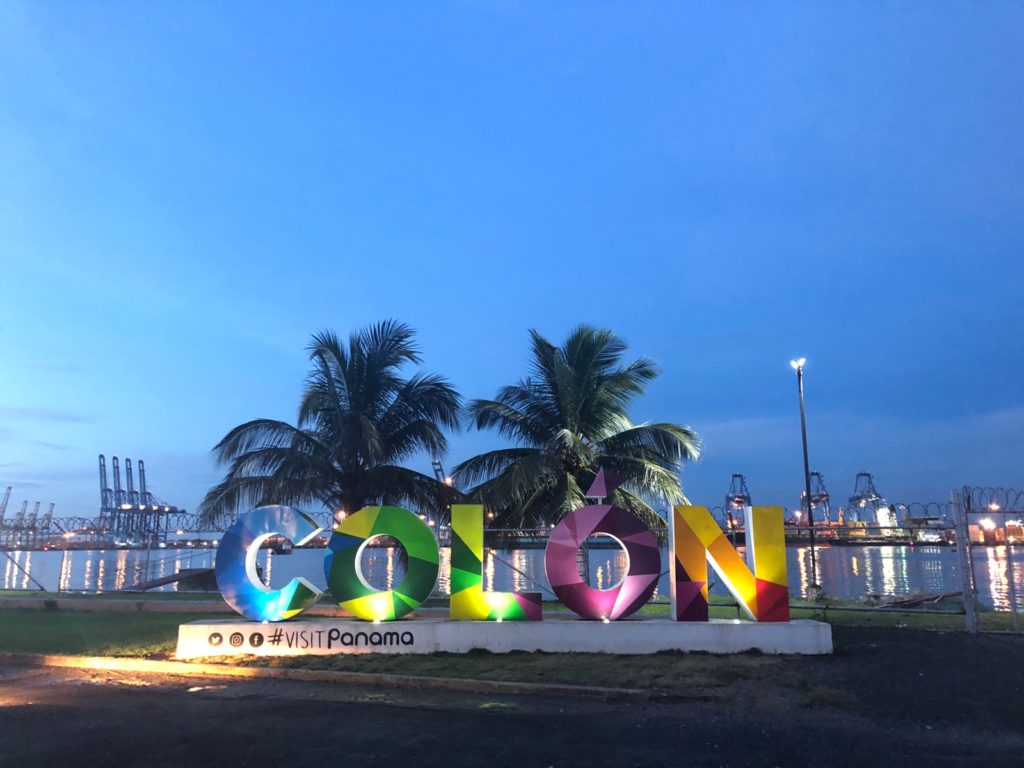






Panama Canal
I had heard (from the Tucks) that you can volunteer as a line handler on boats going through the Panama Canal. Basically all boats need a crew of at least 5 – one skipper and 4 line handlers on each corner. Some small boats might have a crew of two – so they need help. So while I was getting my car ready – I also reached out to a boat I found on this site: http://www.panlinehandler.com/
I was contacted back in an hour or so by a French guy named Sebastien (on the left below). I said I was available starting the day after dropping off my car. We still needed one more line lander, so I made a post on the Facebook Pan-American traveler forum, which once again came through for me. Pat (in the middle below) is an Irish expat hanging out in Panama with some free time before heading to Colombia. Like me he was also fascinated with the canal.
We spent the night on the boat for one night in the harbor, then headed out to the Canal staging area the next day. I had some boat experience having owned a half a sailboat (the other half owned by a very experienced sea captain). Pat had none but was a quick learner.


They had a 34′ sailboat, smallish but in pretty good order. Pat and I slept out on the deck the first night as it was pretty warm and stuffy underneath. It was a good reminder for me that sailing around the world on a small sailboat is *not* on my bucket list.

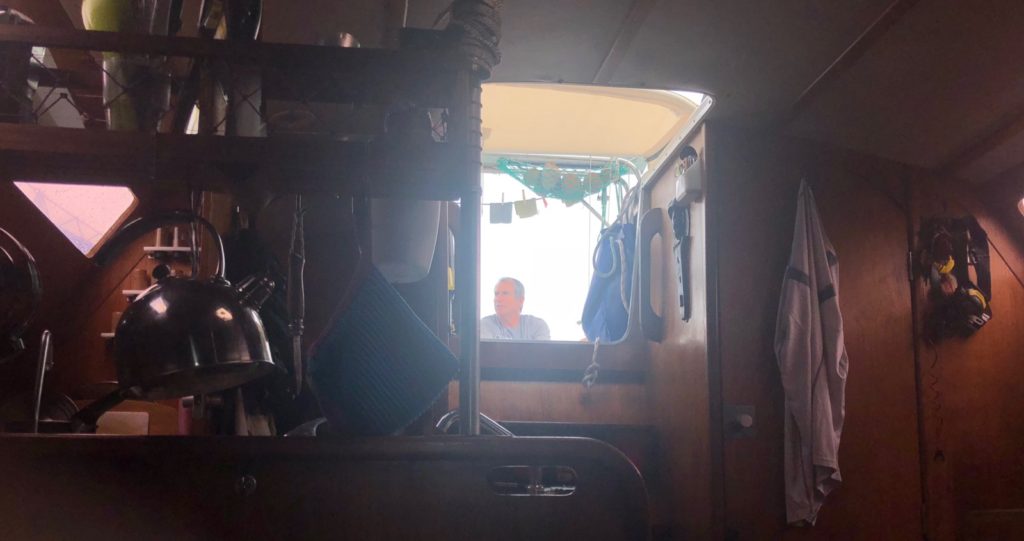


We waited around in the staging area outside the locks until 2pm, when our pilot showed up. Basically he accompanies and guides the boat through all locks and through the canal anytime the boat is moving. We had a different pilot the second day. Both pilots were very patient, spoke very good English (the official language of the canal) and really into talking Canal trivia at any time – which was cool. They were almost like ambassadors and tour guides for the canal.
I forget if I mentioned this in another blog – but he told us the new supermax boats pay $1 million to go through the canal. About 50 boats go through a day – but of course not all are supermax. You can do the math (or look at all the skyscrapers in Panama City) to figure out that Panama has a lot of money rolling in from this.









When we got close to the locks, the pilot had us lash together the 3 small boats who were going through together – biggest boat in the middle. Weirdly all 3 boats were French-crewed. The line handlers are needed to grab and manage the lines that connect to the side of the locks. So the middle boat had 4 line handlers who literally had to do nothing in the locks. The captain still had to steer the boats and I guess he was the lead steerer of the 3 connected boats.
The other two boats needed two line handlers on each exposed side. Sebastian skippered our boat, while Vilma and Gerard (aka Papa) handled the lines. So Pat and I just tried to run around and help w/o getting in the way.
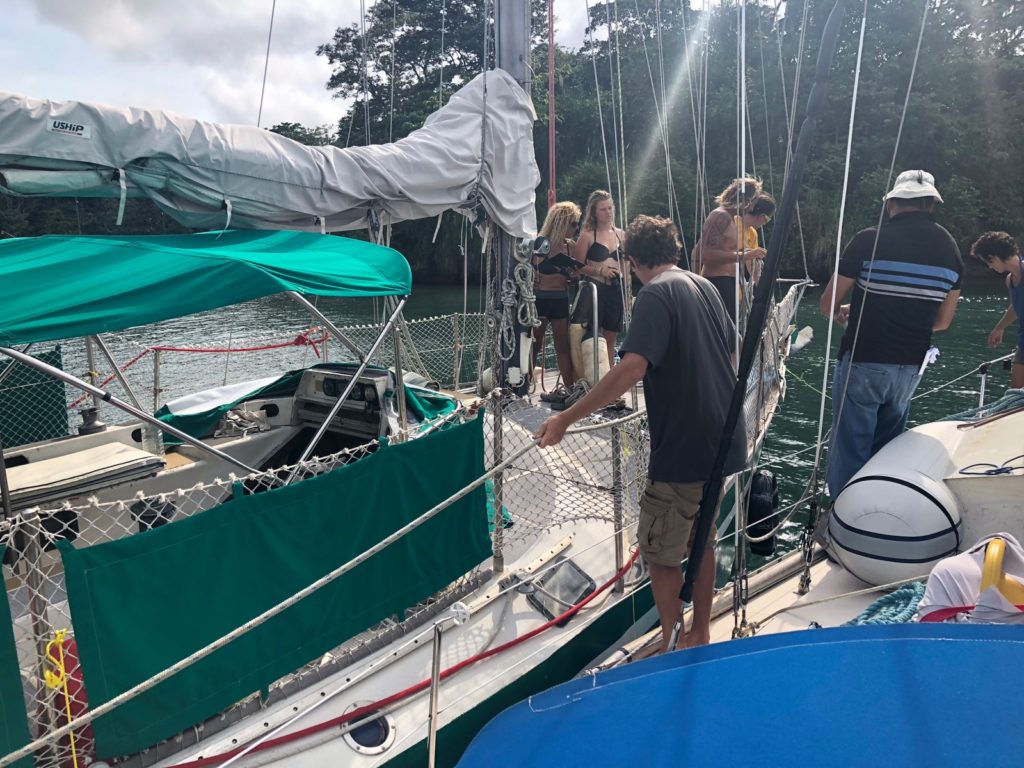



Here’s where I figured out why line handlers are so important. Each lock raises or lowers the boats about 28′. When the boats go up the lines will slack, so you have to pull them in and keep them tight – otherwise the boats could drift to one side or the other and risk crashing into the side. When the boats go down you have to let the lines out in an orderly fashion or you risk – as we joked – 3 boats hanging in mid air as all the water went out from under them. Actually what would probably happen is the boat cleats that the ropes are tied off to would snap off an become deadly projectiles.
However sometimes the lines get pulled anyway – so if you don’t have them secured while you’re pulling (by using the figure 8 minus the last upside down loop) – the line can get yanked out of your hands. Wilma found this out the hard way. Papa – got his hands injured too. Pat and I kept offering to help, as we were at least bigger than either of them, but for the most part they wanted to be responsible for their own boat – which I understand. Our pilot was constantly offering advice and barking orders to try to keep the boats as centered as possible.
The big boats have cables which are attached to little cars that run along tracks on each side of the boat. This is all computerized to keep the boat centered to an incredible degree of accuracy – which is needed as these gigantic boats have only 12 inches (!) of clearance on each side.

Pretty crazy how much the water wells and churns as it’s let into the lock to raise the boats

After making it through the first set of 3 locks to Gatun Lake, the pilots had us tie off to some nearby buoys until the next morning, when a different pilot joined us. I asked about swimming. The pilot did his best to scare us about the lake teeming with crocodiles. A few people swam but did not stay in the water long. I passed.



Pat and I slept out on the deck again but had to bail inside when the distant lightning finally turned into local rain.


The next day we got a new pilot who wasn’t quite as fun as the first guy, but still pretty cool and loved to talk about the Canal. The trip from lock to lock took about 6 hours in our sailboat. I stupidly had made flight plans out that night – which I had to change from the boat when we got cel coverage.


As we approached the locks – a massive rainstorm set in. Sebastien got into his serious rain gear. I just ran around and got wet.


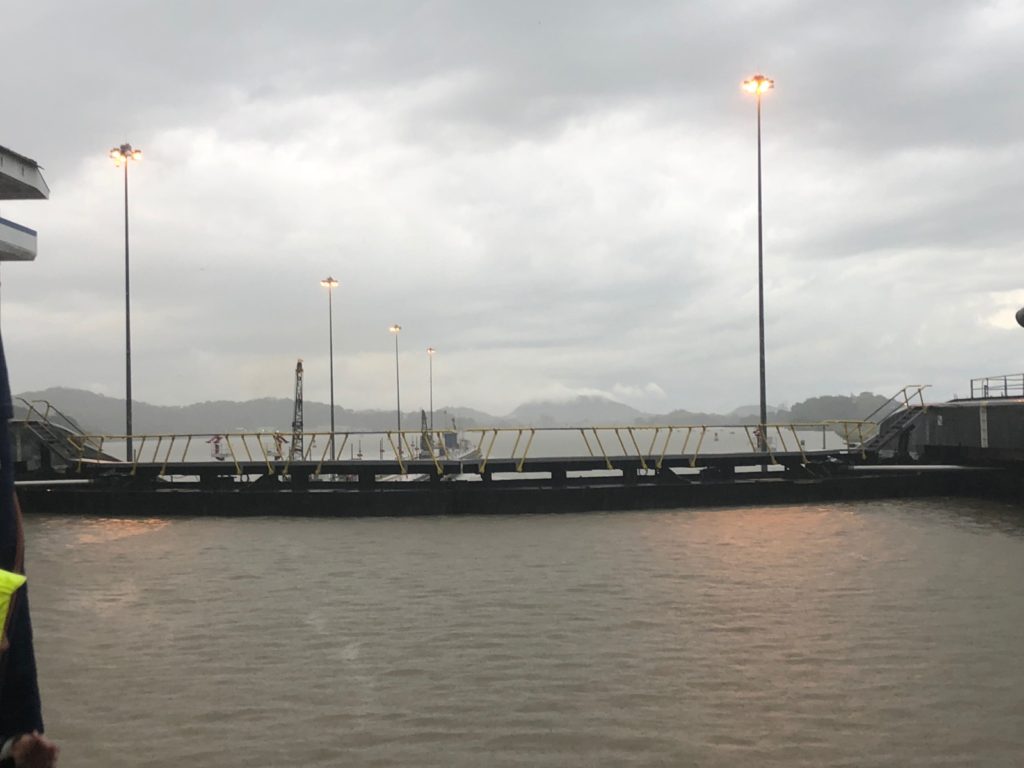

The first day we went behind the big boat. On day two we were in front with a different big boat behind.
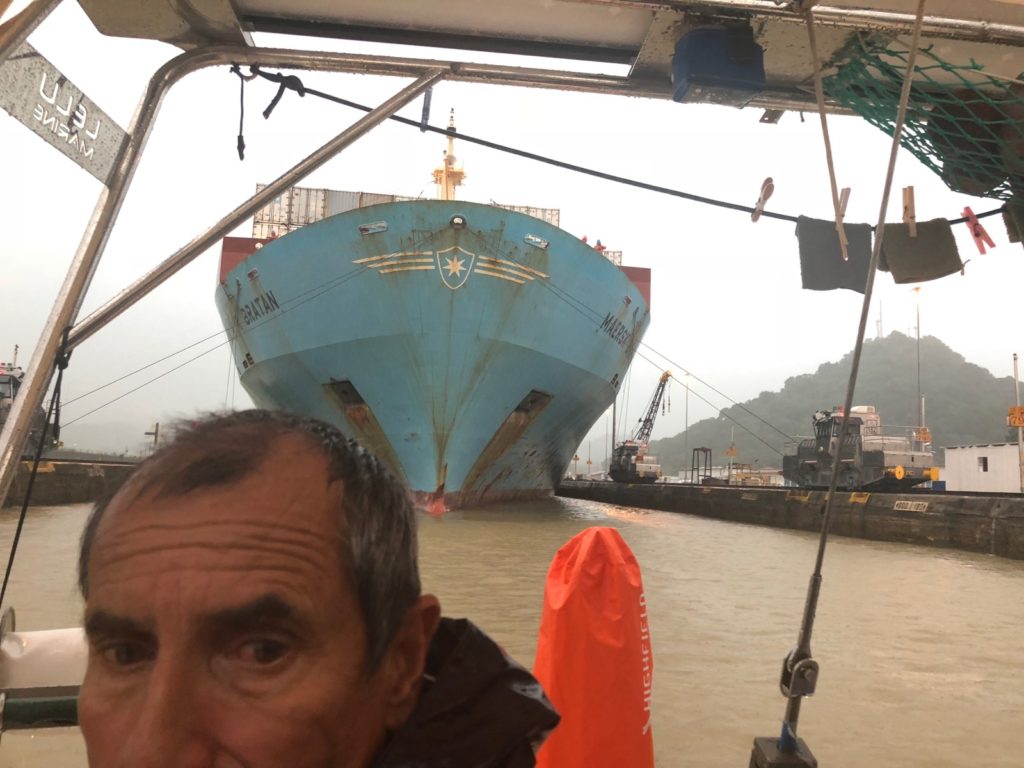



While traversing the locks, the rains subsided.



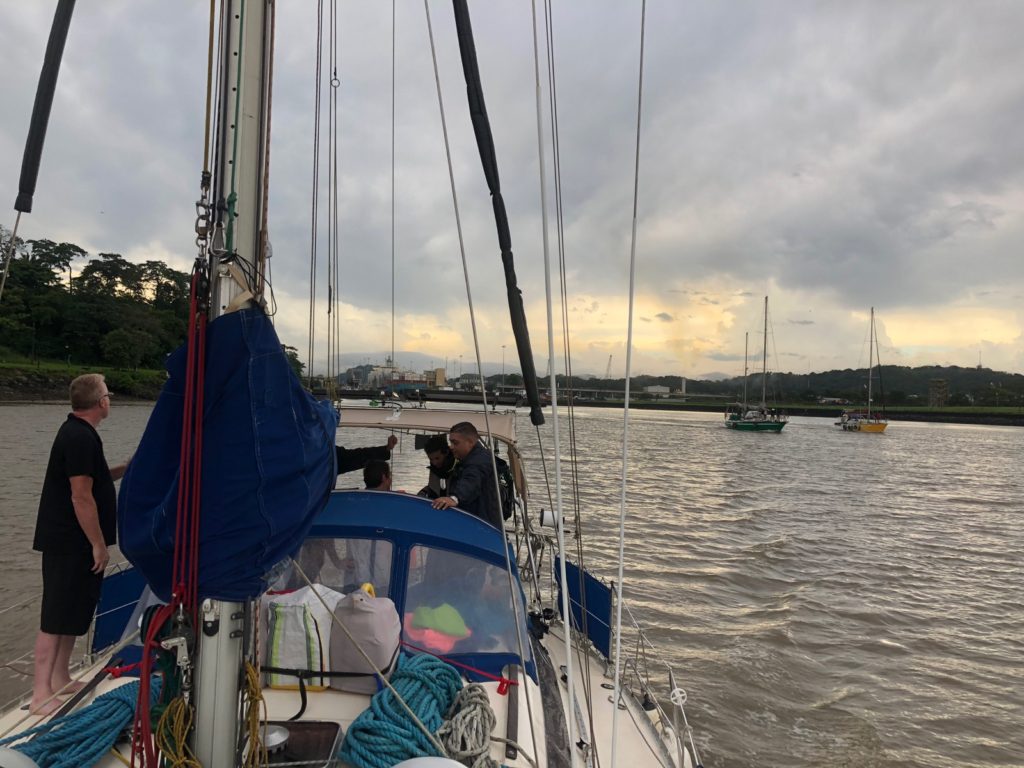

We unconnected and said goodbye to the other boats, then had to go down another kilometer or so before dropping off the pilot. The finally we tied off at Balboa marina – which is just a bunch of buoys. We bid adieu to our canal mates – as a local water taxi took Pat and I to the dock. Pat and I had a few beers. I found a cheap hotel near the airport for my flight out the next morning. We were beat but still thrilled to have this unforgettable experience.
And as they say in Hollywood – that is a wrap – on my Mexico/Central America road trip. Well not 100%. I still had about 8 days to kill before I could pick up my car in Galveston. So I went back to Antigua for another week of Spanish class and evaluation as a possible place to live. I cover that in my next blog – where I also summarize the highlights, lowlights, grand totals and “Best of…” of the trip.








Yes, a wrap on a remarkable adventure, which you’ve documented outstandingly! Thanks for the in-person Panama Canal “tutorial.” Fascinating to learn about. Great way to cap your Mexican and Central American explorations. Thanks also for more photos of appealing, picturesque buildings. Why can’t we in the States do a better job like this? Love their colorful aesthetic. Seems there’s one more, summing-up blog post to go. Bring it on!
— Dad